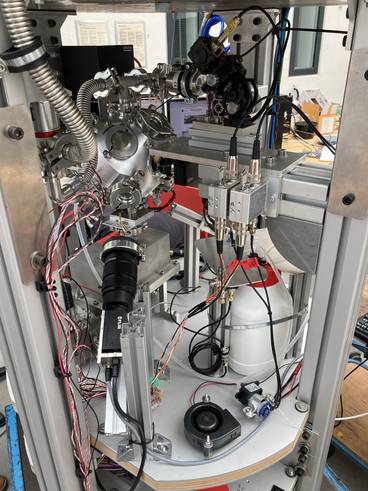A comprehensive experimental simulation of the first stages of protoplanetary dust agglomeration (LAPLACE)

research area: astrophysics
experiment title:
A comprehensive experimental simulation of the first stages of protoplanetary dust agglomeration
experiment acronym: LAPLACE
funding agency: DLR
grant number: 50WM1846
performing organization:
Institut für Geophysik und extraterrestrische Physik, TU Braunschweig /
Microgravity Research Center, Université Libre de Bruxelles
prime investigator:
Prof. Dr. Jürgen Blum /
Dr. Daniyar Balapanov
experiment objective
abstract
We plan to study the growth of dust agglomerates in nascent solar systems from micrometer-sized solid grains to millimeter-sized fractal clusters. In a first step and after creating a homogeneous cloud of single monomer grains dispersed in N2 gas of about 1 mbar pressure, the particles will be subjected to Brownian motion only. Hence, they will collide at extremely low velocities and form large fractal agglomerates. Such experiments are only feasible in a long-duration microgravity environment. To avoid loss of particles due to diffusion, thermophoretic cloud motion or other external disturbances, the dust cloud will be spatially confined using a novel cloud manipulation system (CMS). In a second step, the CMS will be used to “squeeze” the dust cloud into smaller and smaller volumes, thereby initiating collisions among the fractal aggregates at higher velocities so that compaction of the dust clumps is expected, a process that is believed to also occur in planet-forming regions. At the end of this process, most of the initial dust grains will be within a few large clusters or even only one aggregate.
The drop tower campaign shall be utilized to test the core elements of overall setup in preparation of a sounding rocket flight at Blue Origin and calibrate trap parameters.
experiment campaigns
experiment year: 2020
number of catapult launches: 23


 "
"